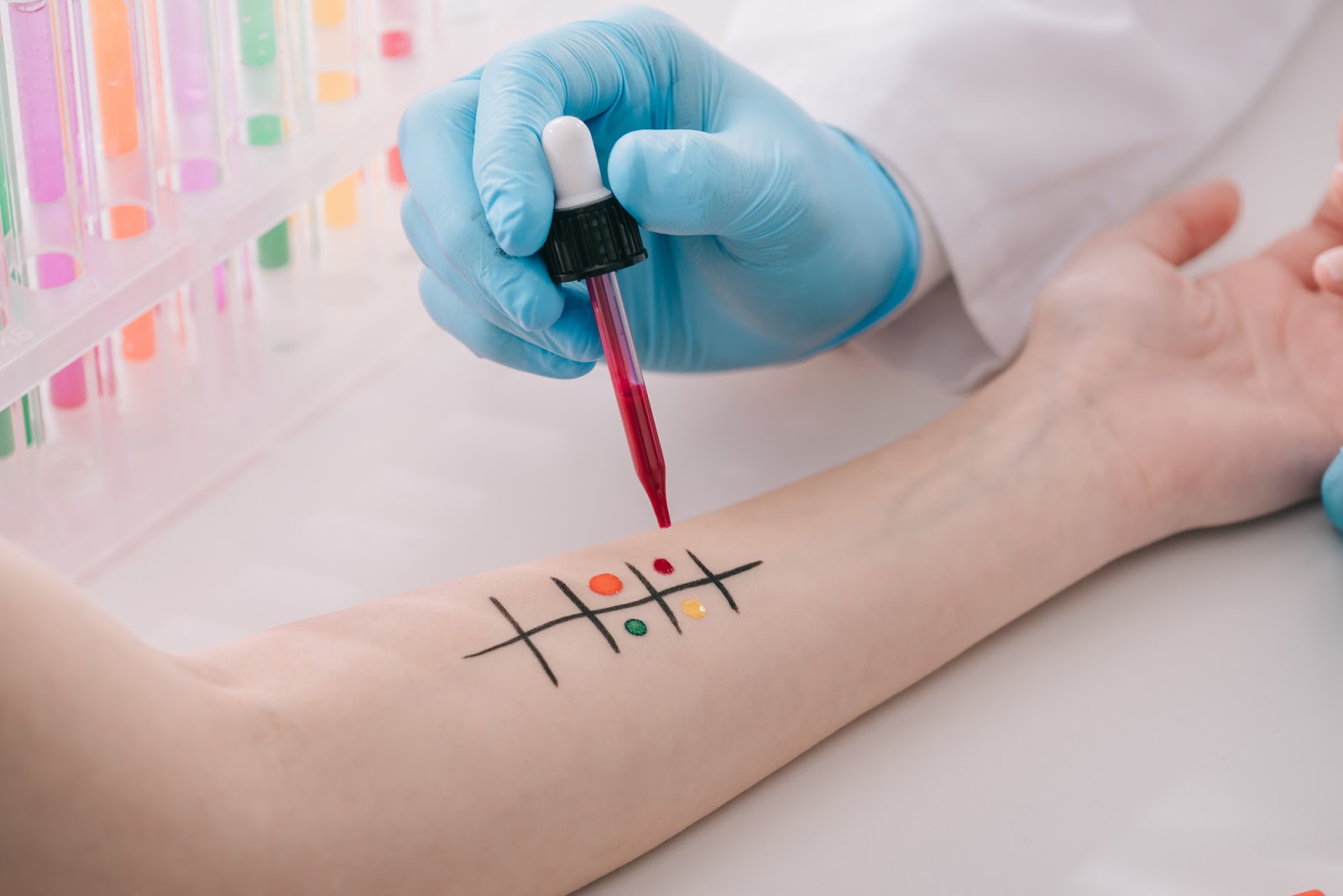

Skincare products are exciting to try. From shampoos and lotions to perfumes and eyeliners, these everyday products can help you look great and feel great at the same time — but not if you find yourself having an allergic reaction to them. For some, a product once coveted can turn into an itchy, bumpy, and painful nightmare.
Allergic reactions to cosmetics, especially fragrances, are not uncommon though. While the exact relationships between the chemical compounds in products and adverse reactions are not yet fully understood, certain chemical compounds used in products can wreak havoc on your skin — especially if you have sensitive skin.
Learning how to spot an allergic reaction is essential — and so is knowing how to care for your skin during and after the reaction has occurred.
How to Tell If You’re Allergic to Skincare Products
If your skin develops any of the following symptoms after using a skincare product, you may be having an allergic reaction:
- Redness;
- Itchiness;
- Pimples;
- Dry, cracked, or scaly patches;
- Hives, bumps, or blisters;
- Swollenness;
- Tenderness;
- A burning or tingling sensation.
The types of skin allergies triggered by personal care products are called “irritant contact dermatitis” and “allergic contact dermatitis.” The former occurs when something damages your skin. Distinguishing between the two different reactions can be difficult. Some allergic reactions may even be a combination of the two. Both reactions generally present as a red, itchy, and uncomfortable rash, but neither are life threatening.
What Causes the Reaction?
It’s not yet well understood why skincare products cause allergic reactions. However, researchers do know how and where these reactions start.
When a foreign substance (known as an antigen) is detected in the body, the immune system’s cells (known as T cells) attempt to neutralize it. Not every chemical compound is caught by these cells, however. For the chemical compounds that are caught, it is because the T cells recognize parts of proteins, or peptides.
A research team led by several doctors and universities conducted a study to find out the exact role personal care products play in triggering a T cell reaction. They suspected that a protein called CD1a might explain why these products could result in contact dermatitis. Eventually, that research would lend to the discovery that the chemical compounds balsam of Peru, benzyl benzoate, benzyl cinnamate, and farnesol all elicit an immune response in subjects.
These are not the only substances that contribute to allergic reactions, however. More allergens are included below.
Skin Care Ingredients That Can Cause Allergic Reactions
The FDA sorts the allergens found in cosmetic products into five different classes: natural rubber, fragrances, preservatives, dyes, and metals.
Common allergens found in cosmetic products are included below:
- Natural rubber: Latex.
A reaction to this product could look like a skin rash that might be accompanied by blisters. - Fragrances: Amyl cinnamal, amyl cinnamyl alcohol, benzyl alcohol, benzyl benzoate, benzyl cinnamate, benzyl salicylate, cinnamyl alcohol, cinnamaldehyde, citral, citronellol, coumarin, eugenol, farnesol, geraniol, hexyl cinnamaldehyde, hydroxycitronellal, hydroxycitronellal, lyral, isoeugenol, lilial, d-Limonene, linalool, methyl 2-octynoate, g-Methylionone, oak moss extract, and tree moss extract.
A reaction to a fragrance could include redness, itching, or burning in addition to headaches, sneezing, or watery eyes. - Preservatives: Methylisothiazolinone, methylchloroisothiazolinone, formaldehyde and formaldehyde-releasing ingredients.
Reactions to preservatives could include skin rashes, burning of the nose, eyes, or throat, and headaches. - Dyes: p-phenylenediamine and coal-tar.
When experiencing a reaction to dyes, the skin may swell, become red and inflamed, and it may itch as well. - Metals: Nickel and gold.
A metal reaction could include scaling skin, redness, swelling with or without a rash or blisters, and itching.
The best skincare products to buy are the ones free of those ingredients. Be sure to carefully review labels or even visit the manufacturer’s website before purchasing any skincare product so you can be certain of avoiding any potentially harmful ingredients.
Caring for Your Skin After a Reaction
Immediately following an allergic reaction, it is essential that you stop using the product. Wash it off the affected area as soon as you notice adverse symptoms. Mild cosmetic reactions will usually resolve themselves once the allergen is removed. Just make sure you avoid the product that triggered it. Throwing it out is your safest bet.
Allergic reactions range in severity. For moderate to severe cosmetic reactions, always call your doctor. If anaphylaxis symptoms occur, seek medical attention immediately.
The best thing you can do for your skin in the future is to know what you’re sensitive to and how to avoid it. Looking for products labeled “hypoallergenic,” “fragrance-free,” or “for sensitive skin” isn’t enough. There is no federal standard controlling the use of these terms. You must make sure to read through labels carefully, checking each ingredient.
Make sure you understand your skin type when shopping for new products. Look for eye creams, face moisturizers, dark spot correctors, and other cosmetic products designed for the type of skin you have. Not every product is going to agree with your skin. Ultimately, it is up to you to find what works and what doesn’t.
Getting Tested For Allergies
It is generally a good idea to get tested for allergies following a reaction. Knowing precisely what allergen caused you to get red and itchy is the best way to avoid further exposure, but if you’re not sure what prompted your reaction, make sure to discuss proper protocol with your physician. There may be a variety of ways that your provider will want to approach determining the offending agent. Talk to your doctor about seeing an allergist or immunologist (doctors who specialize in allergies), so that they can refer you for testing.
The most common forms of testing include skin tests and blood tests. However, if you are experiencing chronic hives, your doctor may order tests for other conditions that may cause these outbreaks, such as thyroid disorder.

